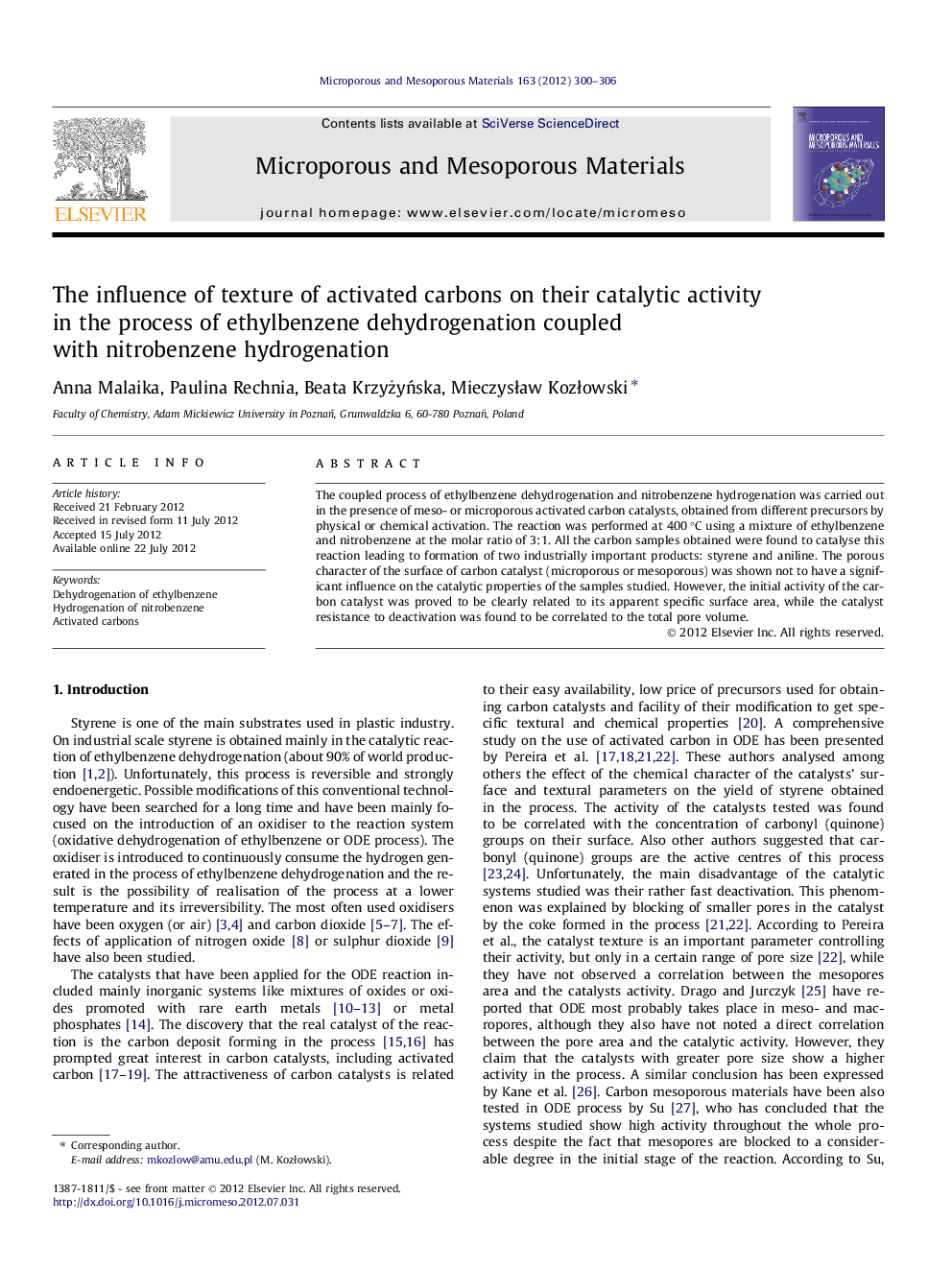| Article ID | Journal | Published Year | Pages | File Type |
|---|---|---|---|---|
| 74004 | Microporous and Mesoporous Materials | 2012 | 7 Pages |
The coupled process of ethylbenzene dehydrogenation and nitrobenzene hydrogenation was carried out in the presence of meso- or microporous activated carbon catalysts, obtained from different precursors by physical or chemical activation. The reaction was performed at 400 °C using a mixture of ethylbenzene and nitrobenzene at the molar ratio of 3:1. All the carbon samples obtained were found to catalyse this reaction leading to formation of two industrially important products: styrene and aniline. The porous character of the surface of carbon catalyst (microporous or mesoporous) was shown not to have a significant influence on the catalytic properties of the samples studied. However, the initial activity of the carbon catalyst was proved to be clearly related to its apparent specific surface area, while the catalyst resistance to deactivation was found to be correlated to the total pore volume.
Graphical abstractFigure optionsDownload full-size imageDownload as PowerPoint slideHighlights► Micro- and mesoporous activated carbons were prepared using different precursors. ► Activity of carbons in dehydrogenation/hydrogenation coupled process was determined. ► The specific surface area of carbon catalysts influences their initial activity. ► The total pore volume of carbons affects their resistance to deactivation.
